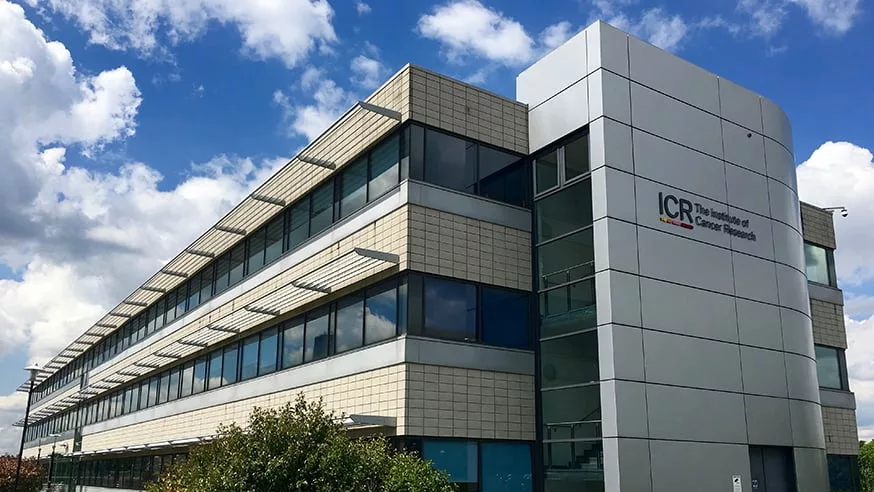The Institute of Cancer Research (ICR) in London is a leading global institution dedicated to understanding cancer and developing new treatments. Their work involves identifying protein ‘targets’ in cancer cells and creating drugs to attack these targets.
Traditionally, modelling these complex proteins was a long, difficult process, often resulting in imprecise and fragile 2D models. However, the introduction of the Stratasys J5 MediJet 3D printer from SYS Systems has revolutionised this process, helping Cancer Research’s vital work.

Project Brief:
A team of professionals at the Institute of Cancer Research in London has created a first-of-its-kind 3D model of the protein being targeted by a novel drug in development designed to help kill cancer cells, incredibly important and delicate work.
A primary goal of the Institute of Cancer Research ‘s work is to use the latest technologies to visualise the proteins that are targeted by these drugs and to determine whether they are the right fit.
The traditional methods used for this purpose were time-consuming, often requiring two weeks to three months to produce a single model using legacy filament-based printing technology. These models were two-dimensional, limiting the amount of information that could be derived from them. They were small and lacked high resolution, reducing their usefulness for detailed analysis. They were not sturdy enough to handle repeatedly and as a result, many models had to be discarded, leading to inefficiencies in the research process.
These issues highlighted the need for a more efficient and precise method to model proteins, which led to ICR investing in the Stratasys J5 MediJet 3D printer, provided by SYS Systems.
The Solution:
3D printing technology, specifically the Stratasys J5 MediJet 3D printer provided by SYS Systems, has offered a transformative solution for the Institute of Cancer Research.
The J5 MediJet printer is designed to create high-resolution, three-dimensional molecular models of proteins involved in various types of cancer. These models mimic the proteins’ natural occurrence in the body, thus allowing for a better understanding of their structure and function.
“The newest 3D print technology allows us to bring to life how we traditionally visualise cellular proteins on a computer in computational chemistry and biology,” said Craig Cummings, Research and Design workshop manager at the 3D printing lab at the ICR.
“With advancements in scientific imaging technologies, it is now possible to create high-resolution molecular models of proteins involved in various types of cancer and develop personalised therapies.”
The Benefits:
The Stratasys J5 MediJet 3D printer has revolutionised research processes at the Institute of Cancer Research. It significantly reduces the time needed for modelling, from months to mere hours. This printer can create larger, complex models in one go, removing the need to produce multiple smaller models, and thereby enhancing research efficiency.
The Stratasys J5 MediJet 3D printer can showcase an unprecedented level of detail, allowing a precise understanding of atomic arrangements within proteins. This aids in accurately predicting how a drug will interact with the targeted protein and identifying potential side effects prior to human trials.
“Visualisation is incredibly important,” said Amin Mirza, MRSC, Head of Structural Chemistry Team at the ICR.
“Cancer researchers need to be able to design a chemical compound to target these pockets, disrupt the protein’s function, and stop the cancerous cell from replicating. 3D modelling allows us to see in and around cellular proteins at the biomolecular level.”
This technology has already demonstrated its value by aiding in the discovery of new techniques to target proteins vital for cancer cell proliferation.
Amin explained: “In drug discovery, we’re working to develop drugs that will fit into the relevant gap or pocket within the protein structure and stop it working.”
“These models will help equip the next generation of cancer researchers.”
Why SYS Systems and Stratasys?
The introduction of the Stratasys J5 MediJet 3D printer in the Institute of Cancer Research has greatly accelerated the pace of cancer research, enabling more precise targeting of proteins involved in cancer and potentially expediting the development of more effective, personalised cancer therapies.

